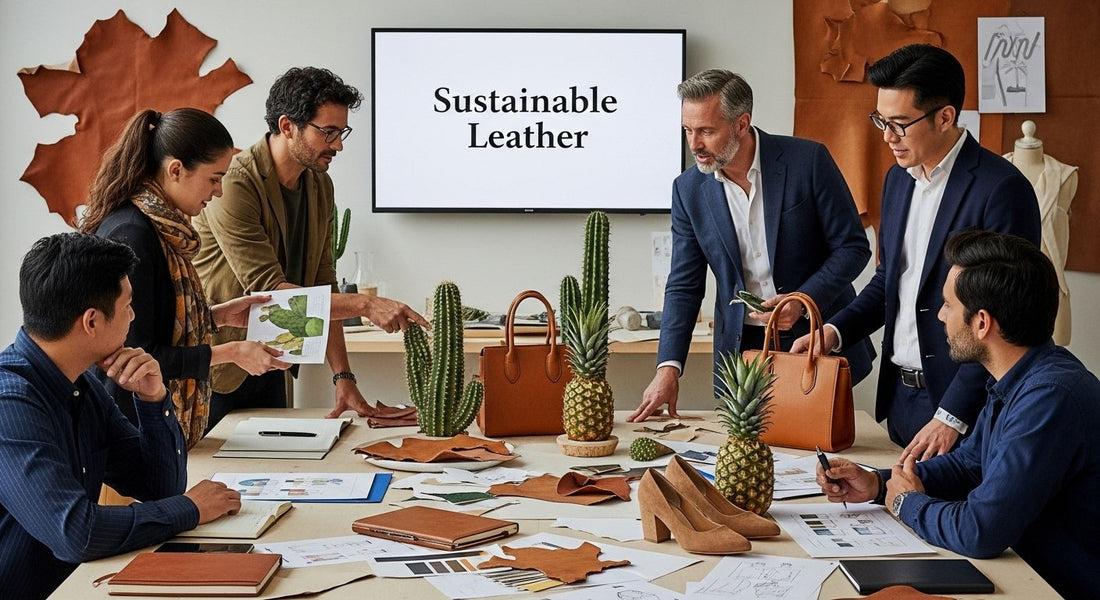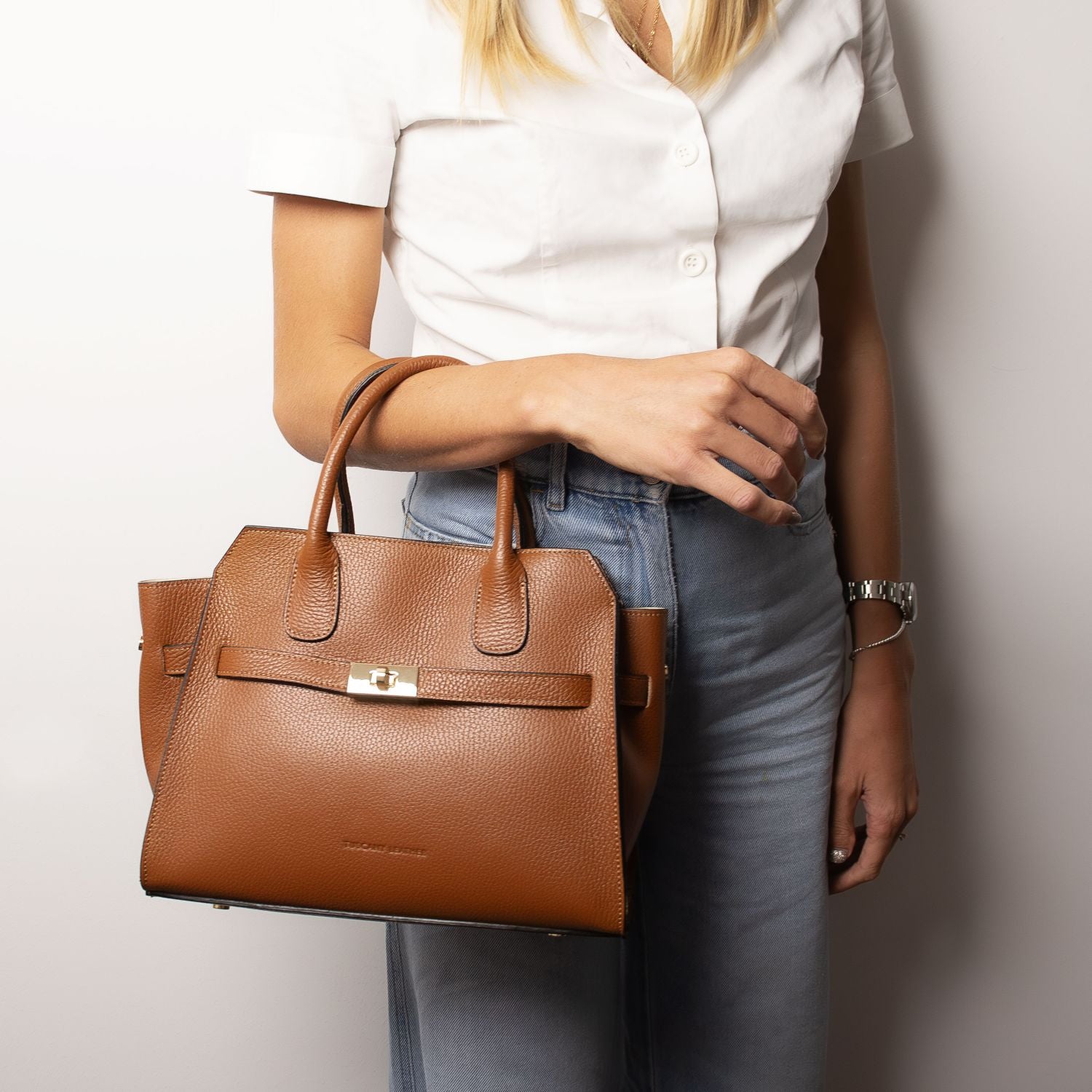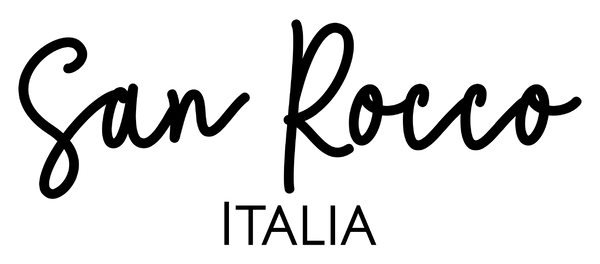
Understanding Sustainable Leather Alternatives for Stylish Fashion
Share

Sustainable leather alternatives are quietly reshaping fashion and manufacturing, using materials as unexpected as pineapple leaves and mushroom fibres. Most people think eco-friendly textiles must compromise on durability or luxury. Yet, some of these materials can reduce carbon emissions by up to 3.5% of the global total when replacing traditional leather. That single shift changes everything you thought you knew about responsible design.
Table of Contents
- What Are Sustainable Leather Alternatives?
- Why Sustainable Leather Alternatives Matter For Fashion
- How Sustainable Leather Alternatives Are Made
- Key Concepts Behind Sustainable Leather Alternatives
- Real-World Applications Of Sustainable Leather Alternatives
Quick Summary
| Takeaway | Explanation |
|---|---|
| Sustainable leather alternatives reduce environmental impact. | These alternatives are made from agricultural waste, lowering water usage and carbon emissions compared to traditional leather. |
| Plant-based sources include pineapples and mushrooms. | Innovative methods turn materials like pineapple leaves and mushroom mycelium into leather-like textiles that mimic traditional properties. |
| Synthetic and recycled options enhance sustainability. | Advanced polymer technologies transform recycled plastics into durable materials, addressing both waste and resource consumption problems. |
| Crucial for modern consumer demands. | As consumers seek transparency and eco-friendly choices, these alternatives provide ethical options that align with evolving values. |
| Applications extend beyond fashion. | Industries such as automotive are adopting sustainable materials, demonstrating versatility and potential beyond traditional use. |
What are Sustainable Leather Alternatives?
Sustainable leather alternatives represent innovative materials designed to replace traditional animal-derived leather while minimising environmental impact and addressing ethical concerns. These groundbreaking solutions emerge from an urgent need to transform fashion’s ecological footprint and provide consumers with responsible textile choices.
To help visualise the different categories of sustainable leather alternatives and their main features, the following table organises the plant-based and synthetic options discussed in the article.
| Category | Example Materials | Key Features |
|---|---|---|
| Plant-Based | Pineapple leaves, cactus fibres, apple peels, mushroom mycelium | Biodegradable, reduced water usage, lower carbon footprint, uses agricultural by-products, cruelty-free |
| Synthetic/Recycled | Recycled plastics, advanced polymers | Durable, water resistant, design flexibility, addresses waste management, supports circular economy |
Plant-Based Leather Technologies
Modern sustainable leather alternatives primarily derive from organic materials that would typically be considered agricultural waste. Ingenious technologies now transform pineapple leaves, cactus fibres, apple peels, and mushroom mycelium into durable, flexible materials mimicking leather’s aesthetic and functional properties. Research from the University of Georgia demonstrates these plant-based alternatives can significantly reduce carbon emissions compared to traditional leather production.
Key characteristics of plant-based leather alternatives include:
- Biodegradable composition
- Reduced water consumption during manufacturing
- Lower carbon footprint
- Utilisation of agricultural by-products
- Cruelty-free production process
Synthetic and Recycled Alternatives
Beyond plant-based solutions, sustainable leather alternatives also encompass innovative synthetic materials made from recycled plastics and advanced polymer technologies. These engineered textiles provide durability, water resistance, and design flexibility while addressing waste management challenges. Cutting-edge laboratories are developing bioleather grown from cellular technologies, representing a revolutionary approach to textile manufacturing that minimises environmental degradation.
The emergence of sustainable leather alternatives signifies a transformative moment in fashion, where environmental consciousness meets technological innovation. As consumers become increasingly aware of their purchasing decisions’ ecological implications, these materials offer a compelling pathway towards more responsible and ethical textile production.
Why Sustainable Leather Alternatives Matter for Fashion
Sustainable leather alternatives represent more than a passing trend. They are a critical response to the fashion industry’s substantial environmental challenges, offering a transformative approach to textile production that balances aesthetic appeal with ecological responsibility.
Environmental Impact of Traditional Leather
Traditional leather production generates significant environmental strain.

The leather manufacturing process involves extensive water consumption, harmful chemical treatments, and substantial greenhouse gas emissions. Research from the World Economic Forum reveals that conventional leather production contributes approximately 3.5% of global carbon emissions, making it a crucial area for sustainable innovation.
Key environmental challenges in traditional leather production include:
- Massive water usage in animal rearing and processing
- High levels of toxic chemical treatments
- Significant carbon footprint from livestock and manufacturing
- Deforestation linked to cattle farming
- Substantial waste generation
Ethical and Consumer Driven Transformation
Modern consumers increasingly demand transparency and sustainability in fashion. This shift has compelled brands to explore innovative leather alternatives that align with evolving ethical standards. Sustainable leather options not only reduce environmental impact but also address animal welfare concerns, offering consumers a choice that reflects their values without compromising on style or quality.
The rise of sustainable leather alternatives signals a profound change in the fashion ecosystem. By embracing these innovative materials, designers and brands can create products that are both environmentally responsible and aesthetically compelling, meeting the growing demand for conscious consumption in the luxury fashion market.
To clarify the environmental concerns associated with traditional leather compared to the benefits of sustainable alternatives, the table below summarises key differences mentioned in the article.
| Aspect | Traditional Leather | Sustainable Alternatives |
|---|---|---|
| Water Usage | High (animal rearing and processing) | Lower due to efficient processes and plant-based sources |
| Chemical Treatments | Extensive, often toxic | Minimal or replaced by vegetable-based treatments |
| Carbon Emissions | Approx. 3.5% of global emissions | Significantly reduced |
| Animal Welfare | Animal-derived, associated ethical concerns | Cruelty-free |
| Waste Generation | Substantial during production and processing | Utilises waste as resource, generating less waste |
| Source Materials | Livestock/cattle | Agricultural by-products, recycled plastics |

How Sustainable Leather Alternatives are Made
Sustainable leather alternatives are manufactured through complex and innovative processes that transform organic materials into durable, leather-like textiles. These sophisticated production methods leverage cutting-edge biotechnology and advanced material science to create environmentally responsible alternatives.
Biotechnological Manufacturing Processes
Plant-based leather alternatives emerge from intricate extraction and processing techniques that convert agricultural waste into functional materials. Innovative manufacturers use advanced technologies to transform organic matter like pineapple leaves, cactus fibres, and mushroom mycelium into flexible, leather-like textiles. Research from Columbia Engineering demonstrates how microbial nanocellulose can be cultivated to produce compostable materials with significantly reduced environmental impact.
Key biotechnological manufacturing techniques include:
- Enzymatic extraction of natural fibres
- Microbial cultivation of cellulose networks
- Chemical treatments to enhance material durability
- Compression and layering of organic materials
- Sustainable tanning processes using vegetable extracts
Synthetic and Recycled Material Production
Synthetic sustainable leather alternatives leverage advanced polymer technologies and recycling methodologies. Manufacturers transform post-consumer plastics and industrial waste into high-performance textile materials that mimic leather’s aesthetic and functional properties. These innovative approaches not only reduce environmental waste but also create circular manufacturing processes that minimise resource consumption.
The production of sustainable leather alternatives represents a remarkable convergence of environmental consciousness and technological innovation. By reimagining textile manufacturing through sustainable lens, researchers and designers are creating materials that challenge traditional production paradigms and offer consumers responsible, high-quality alternatives.
Key Concepts Behind Sustainable Leather Alternatives
Sustainable leather alternatives represent a sophisticated intersection of material science, environmental engineering, and design innovation. These groundbreaking materials challenge traditional textile production paradigms by reimagining how functional, aesthetically pleasing textiles can be created with minimal environmental impact.
Biomimetic Material Design
Biomimetic approaches form the cornerstone of sustainable leather alternative development. Researchers draw inspiration from natural biological structures to create materials that replicate leather’s intrinsic properties while maintaining ecological integrity. Research from Columbia Engineering demonstrates how microbial nanocellulose can be engineered to produce compostable materials that mirror leather’s structural complexity.
Core principles of biomimetic material design include:
- Mimicking natural material structures
- Leveraging biological self-assembly processes
- Reducing chemical and energy interventions
- Creating materials with inherent resilience
- Developing biodegradable textile solutions
Circular Economy and Material Transformation
Sustainable leather alternatives embody the circular economy’s fundamental principles by transforming waste materials into high-value textiles. Innovative manufacturers convert agricultural by-products, industrial waste, and post-consumer materials into sophisticated leather-like substances. This approach challenges linear production models, creating closed-loop systems that minimise resource consumption and environmental degradation.
The conceptual framework of sustainable leather alternatives extends beyond material production. These innovative textiles represent a profound reimagining of industrial design, where environmental stewardship, technological innovation, and aesthetic excellence converge to create materials that respect both human creativity and ecological balance.
Real-World Applications of Sustainable Leather Alternatives
Sustainable leather alternatives are rapidly transforming multiple industries, demonstrating their potential to revolutionise material design beyond traditional fashion boundaries. These innovative materials offer practical solutions across diverse sectors, challenging conventional textile and manufacturing approaches.
Fashion and Luxury Design
Luxury fashion brands are increasingly embracing sustainable leather alternatives as a means of meeting consumer demand for environmentally responsible products. Collective Fashion Justice highlights how designers are integrating materials like pineapple leaf leather, cactus leather, and apple waste textiles into high-end collections, proving that sustainability and style can coexist harmoniously.
Significant fashion industry applications include:
- Designer handbag collections
- Sustainable footwear ranges
- Innovative accessories and small leather goods
- Environmentally conscious outerwear
- Cruelty-free fashion lines
Automotive and Industrial Applications
Beyond fashion, sustainable leather alternatives are making substantial inroads into automotive and industrial design. Innovative manufacturers are developing leather-like materials that offer comparable durability and aesthetic appeal to traditional leather, while significantly reducing environmental impact. Premium automotive brands are exploring these materials for interior components, demonstrating their versatility and performance potential.
The integration of sustainable leather alternatives represents more than a technological advancement. It symbolises a broader cultural shift towards responsible material consumption, where environmental considerations are seamlessly woven into design, functionality, and aesthetic excellence.
Experience Authentic Craftsmanship That Respects Your Values
Are you inspired by the rise of sustainable leather alternatives but still desire the timeless quality of beautifully made luxury goods? Many readers of “Understanding Sustainable Leather Alternatives for Stylish Fashion” seek ways to balance environmental responsibility with heritage design. At San Rocco Italia, we understand the challenges of choosing products that reflect both your ethical beliefs and your desire for enduring style. Our boutique celebrates genuine artisan skill, with every piece thoughtfully crafted to honour both tradition and mindful material choice.

Make your next statement one of elegance and conscious choice. Explore our curated collection of exquisite handbags and accessories, all hand-made in Italy from premium full-grain leather selected for its durability and natural beauty. Every creation at San Rocco Italia showcases meticulous artistry that values quality over mass production. Discover pieces that truly stand the test of time while reflecting your commitment to responsible luxury. Visit our latest arrivals today and step into a world where design meets authenticity. Shop your values now and elevate your everyday look with meaning.
Frequently Asked Questions
What are sustainable leather alternatives made from?
Sustainable leather alternatives are primarily made from organic materials such as agricultural waste, including pineapple leaves, cactus fibres, apple peels, and mushroom mycelium. They can also include synthetic materials made from recycled plastics.
How do sustainable leather alternatives benefit the environment?
These alternatives significantly reduce carbon emissions, water consumption, and waste generation compared to traditional leather production. They use biodegradable compositions and cruelty-free processes, contributing to a more sustainable fashion industry.
Are sustainable leather alternatives durable and functional?
Yes, sustainable leather alternatives are designed to be durable and functional, mimicking the aesthetic properties of traditional leather while offering benefits like water resistance and flexibility, making them suitable for various applications.
How does the production of sustainable leather alternatives compare to traditional leather?
The production of sustainable leather alternatives uses innovative biotechnology and recycling methodologies that limit environmental impact, whereas traditional leather production involves harmful chemicals and extensive water usage, leading to greater ecological strain.


